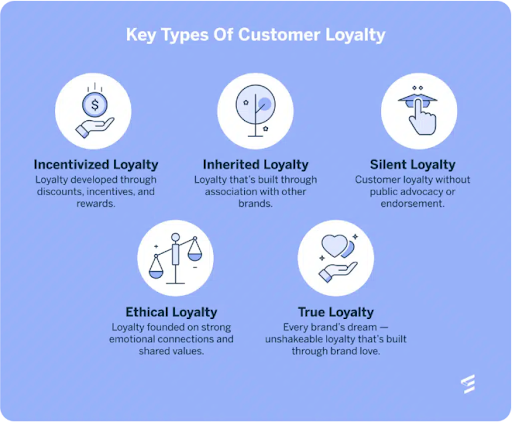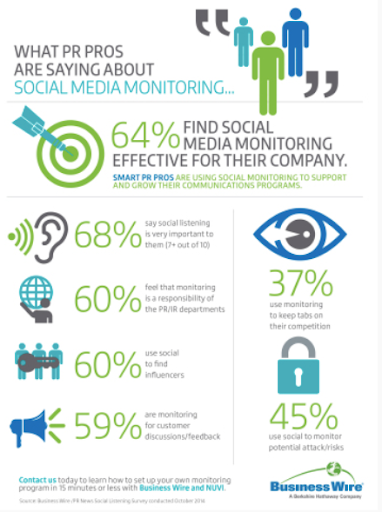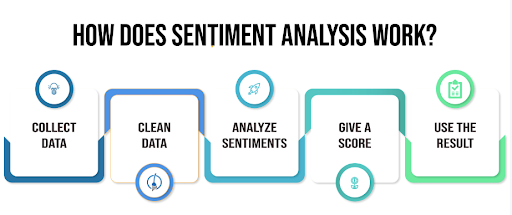In today’s rapidly changing business landscape, marked by technological advancements and an ever-increasing array of choices, the role of Customer Sentiment Analysis has taken center stage. As businesses navigate through this dynamic environment, the importance of fostering strong connections with customers has become a defining factor for success. Gone are the days when transactions solely determined business outcomes; now, it’s the enduring relationships and positive sentiments that customers carry that truly set companies apart. In this blog, we embark on a journey to understand the transformative impact of Measuring Customer Sentiment on brand loyalty.

What Is Positive Customer Sentiment?
Positive Customer Sentiment encapsulates the favorable feelings, opinions, and attitudes that customers hold towards a brand, its products, or its services. It reflects the overall satisfaction and emotional connection that customers experience throughout their interactions with a business. This sentiment is often expressed through various channels, including social media, online reviews, and direct feedback, providing valuable insights into the customer’s perception of a brand. This includes examples of Customer Sentiment Analysis such as Customer Sentiment Score and Customer Feedback Analysis Using NLP.
Importance of Positive Customer Sentiment in Business
In a highly competitive market, the ability to gauge and respond to Customer Sentiment allows businesses to tailor their strategies, enhancing the overall customer experience. This, in turn, influences brand perception, customer loyalty, and even market share.
Understanding Customer Sentiment is not merely a metric for measuring satisfaction but a strategic imperative for businesses aiming to thrive in a customer-centric era. Brands that prioritize Sentiment Analysis for Customer Feedback gain a competitive edge by adapting and evolving based on real-time customer feedback, thereby staying attuned to the ever-changing demands and expectations of their audience. The Use of Sentiment Analysis in Business is increasingly essential for developing effective customer engagement strategies.
Focusing on Brand Loyalty as an Outcome of Positive Customer Sentiment

One of the most significant outcomes of cultivating positive Customer Sentiment is the establishment and fortification of brand loyalty. When customers feel a genuine connection with a brand, supported by positive experiences and emotions, they are more likely to become loyal advocates. Brand loyalty transcends mere transactional relationships; it transforms customers into brand ambassadors who not only continue to choose a specific brand but also enthusiastically recommend it to others.
Methods for Measuring Positive Customer Sentiment Towards Brands
The following methods are used to measure Customer Sentiment Analysis:
Surveys and Feedback for Measuring Customer Sentiment
Surveys have long been a staple in understanding Customer Sentiment. Whether conducted through email, phone calls, or on-site pop-ups, surveys allow businesses to directly ask their customers about their experiences. Questions can range from overall satisfaction to specific aspects of products or services, providing quantitative and qualitative data. The key is to design surveys that are concise, relevant, and easy to complete.
Feedback mechanisms, such as comment boxes or follow-up emails, also play a significant role in Customer Feedback Analysis Using NLP. These channels empower customers to share their thoughts spontaneously, offering real-time insights. Analyzing survey responses and feedback not only helps in identifying areas for improvement but also highlights strengths that can be emphasized in marketing efforts.
Social Media Monitoring and Sentiment Analysis from Text Feedback

In the age of digital communication, social media has become a powerful tool for customers to express their opinions publicly. Brands can tap into this valuable resource by actively monitoring platforms like Twitter, Facebook, Instagram, and LinkedIn. Social media listening tools enable businesses to track mentions, comments, and sentiment indicators related to their brand, contributing to NPS Sentiment Analysis.
Analyzing social media content provides a snapshot of real-time Customer Sentiment. Positive mentions can be celebrated and shared, while negative comments can be addressed promptly to prevent potential reputational damage. Additionally, understanding trending topics and conversations within the industry helps businesses stay responsive to evolving customer preferences through effective Voice of Customer Sentiment Analysis.
Online Reviews and Customer Sentiment Score
Online reviews have become an integral part of the consumer decision-making process. Platforms like Yelp, Google Reviews, and industry-specific review sites host a wealth of information about customer experiences. Analyzing these reviews allows businesses to gain insights into specific product features, customer service performance, and overall satisfaction levels.
Responding to online reviews, both positive and negative, is an essential practice for measuring Customer Sentiment Score. Acknowledging positive feedback shows appreciation. Addressing concerns expressed in negative reviews demonstrates a commitment to customer satisfaction. Businesses can leverage positive reviews in marketing materials to build trust and credibility, enhancing their Customer Sentiment Analysis efforts.

The Impact of Positive Customer Sentiment on Brand Loyalty
Customer Sentiment serves as a foundation for the success of any business, and its impact extends far beyond mere satisfaction. Positive customer sentiment holds transformative power, shaping the perception of brands.
Building Trust and Credibility
Trust is the cornerstone of any successful brand-consumer relationship. Positive customer sentiment acts as a catalyst for fortifying this trust, creating a solid foundation for long-term connections. When customers experience consistently positive interactions with a brand, they trust its products, services, and promises. Trust, once earned, leads to increased credibility, positioning the brand as reliable and authentic in the eyes of the consumer.
Customers are more likely to engage with a brand they trust, making repeat purchases and becoming loyal patrons. Positive sentiment fosters an environment where customers feel confident in their decisions, knowing that the brand is committed to delivering value and maintaining high standards.
Increased Customer Lifetime Value
Positive customer sentiment is directly tied to the financial health of a business, particularly through the concept of Customer Lifetime Value (CLV). CLV represents the total revenue a business can expect from a single customer throughout their entire relationship.
Customers who experience positive sentiment are more likely to remain loyal, leading to increased repeat business and a higher CLV. Satisfied customers not only become returning ones, but they also tend to explore other products or services offered by the brand. Additionally, they are less sensitive to pricing changes, as the emotional connection they have with the brand often transcends mere transactional considerations. The Use of Sentiment Analysis in Business helps in nurturing this emotional connection and drives long-term success.
Nurturing Increased Brand Loyalty through Customer Sentiment Analysis
Increased brand loyalty is the ultimate outcome of sustained positive Customer Sentiment Analysis. Loyal customers are those who not only make repeat purchases but actively choose a brand over its competitors. Positive sentiment becomes the bedrock upon which lasting brand loyalty is built.
1. Emotional Connection: Positive Customer Sentiment fosters an emotional connection between the customer and the brand. This emotional bond goes beyond the functional aspects of products or services, creating a sense of belonging and loyalty.
2. Customer-Centric Experiences: Brands that prioritize positive sentiment are more likely to invest in customer-centric experiences. From personalized communication to tailored offerings, these experiences reinforce the customer’s decision to remain loyal to a brand that consistently prioritizes their satisfaction.
3. Adaptability and Innovation: Positive sentiment often arises from a brand’s ability to adapt to evolving customer needs and innovate accordingly. Companies that stay attuned to customer feedback, embrace change, and continuously improve their offerings are more likely to cultivate unwavering brand loyalty.
Strategies for Cultivating Positive Customer Sentiment for Brands
Measuring Customer Sentiment is heavily influenced by the experiences customers have with a brand. To foster positive sentiment, businesses need to strategically focus on various aspects of customer interaction. Here are four effective strategies:
Providing Exceptional Customer Service
Exceptional customer service is the cornerstone of positive customer sentiment. It goes beyond merely addressing issues; it involves creating memorable experiences that leave a lasting impression. This can include:
- Prompt and Personalized Assistance: Timely and personalized responses show customers that their concerns are genuinely valued.
- Empathy and Understanding: Listening actively and showing empathy in problem resolution can turn a potentially negative experience into a positive one.
- Consistent Service Across Channels: Ensuring a consistent level of service across all touchpoints reinforces the brand’s commitment to customer satisfaction.
Personalization and Customization
Personalization is a powerful tool for cultivating positive customer sentiment. Tailoring experiences to individual preferences and needs can significantly enhance the customer’s connection with the brand. Key elements include:
- Personalized Communication: Addressing customers by name and providing relevant content based on their preferences and past interactions.
- Customized Products or Services: Offering personalized recommendations or customizable options demonstrates a commitment to meeting specific customer needs.
- Loyalty Programs: Rewarding customers for their loyalty with personalized offers and exclusive benefits can deepen the bond between the customer and the brand.
Actively Listening to Customer Feedback
Listening to customer feedback is crucial for understanding their sentiments and expectations. Actively engaging with customers’ opinions can lead to valuable insights and improvements. Strategies for effective feedback management include:
- Surveys and Feedback Forms: Regularly seeking input through surveys helps in gauging satisfaction levels and identifying areas for improvement, supporting Customer Feedback Analysis Using NLP.
- Social Media Monitoring: Keeping a close eye on social media platforms allows brands to respond promptly to customer feedback and address concerns publicly, enhancing Voice of Customer Sentiment Analysis.
- Feedback Integration: Actively incorporating customer suggestions and feedback into product/service enhancements demonstrates a commitment to continuous improvement, pivotal for NPS Sentiment Analysis.
Responding to Negative Feedback Constructively
Negative feedback is inevitable, but how a brand responds can significantly impact Customer Sentiment Score. Turning negative experiences into positive outcomes involves:
- Swift Response: Addressing negative feedback promptly shows a commitment to resolving issues, which is crucial for effective Sentiment Agent Measurement.
- Acknowledgment and Apology: Acknowledge the customer’s concerns, apologize for any inconvenience, and provide a constructive solution.
- Learning from Feedback: Use negative feedback as an opportunity to identify areas for improvement and implement changes that demonstrate a commitment to customer satisfaction, ultimately enhancing Sentiment Analysis for Customer Feedback.
The Role of Technology in Analyzing Customer Sentiment & Brand Loyalty

In the ever-evolving landscape of customer relations, the role of artificial intelligence (AI) has become increasingly prominent, particularly in Customer Sentiment Analysis. AI technologies, such as Natural Language Processing (NLP) and machine learning algorithms, empower businesses to sift through vast amounts of customer data to discern sentiment patterns, crucial for Measuring Customer Sentiment.
1. Natural Language Processing (NLP): NLP plays a pivotal role in understanding the nuances of human language, allowing AI systems to comprehend and interpret customer feedback analysis using NLP accurately. By analyzing text from surveys, social media posts, and reviews, NLP enables businesses to gain deeper insights into the emotions and opinions expressed by their customers, enhancing Sentiment Analysis for Customer Feedback.
2. Machine Learning Algorithms: Machine learning algorithms enhance sentiment analysis by continuously learning and adapting to evolving language patterns. These algorithms can categorize sentiments into positive, negative, or neutral, and even identify sentiment strength. This dynamic approach ensures that sentiment analysis remains effective in capturing the ever-changing landscape of customer opinions, contributing to a reliable Customer Sentiment Score.
3. Sentiment Trends and Predictive Analysis: AI-powered customer sentiment analysis not only interprets current customer sentiments but also predicts future trends. By identifying patterns in historical data, machine learning models can anticipate shifts in sentiment, allowing businesses to proactively address potential issues or capitalize on emerging positive sentiments. This predictive capability can be further supported by NPS Sentiment Analysis Tools.
Generative AI and Customer Sentiment Analysis in Shaping Brand Perception
The advent of generative AI has introduced a new dimension to Customer Sentiment Analysis. Generative AI models, like OpenAI’s GPT (Generative Pre-trained Transformer), are capable of understanding context, generating human-like text, and grasping the subtleties of sentiment expressed in customer interactions, making it highly effective for Generative AI for Customer Sentiment Analysis.
1. Contextual Understanding: Generative AI excels at understanding context, which is crucial for accurate sentiment analysis. These models can comprehend the intricacies of language, taking into account sarcasm, humor, and other contextual elements that might influence sentiment, contributing to Voice of Customer Sentiment Analysis.
2. Enhanced Accuracy in Sentiment Identification: Generative AI goes beyond simple positive, negative, or neutral classifications. It can discern fine-grained sentiments, providing a more nuanced understanding of customer emotions. This advanced capability enhances the accuracy of sentiment identification, crucial for effective Sentiment Agent Measurement.
3. Customizable Solutions: Generative AI models can be fine-tuned and customized based on specific industry nuances and brand personalities. This adaptability ensures that sentiment analysis aligns with the unique characteristics of each business, resulting in more personalized and effective customer interactions.
Conclusion
As businesses navigate the dynamic landscape of the modern market, fostering a positive and memorable customer experience becomes a strategic imperative. The symbiotic relationship between satisfied customers and brand loyalty is a powerful force that can propel a business to sustained success. By consistently delivering exceptional products, services, and interactions, companies not only secure customer loyalty but also create brand advocates who willingly champion their offerings. This highlights the critical use of sentiment analysis in business for driving customer loyalty and enhancing overall performance.
About Wizr AI
Wizr AI is an Advanced Enterprise AI Platform that empowers businesses to build Autonomous AI Agents, AI Assistants, and AI Workflows, enhancing enterprise productivity and customer experiences. Our CX Control Room leverages Generative AI to analyze insights, predict escalations, and optimize workflows. CX Agent Assist AI delivers Real-Time Agent Assist, boosting efficiency and resolution speed, while CX AutoSolve AI automates issue resolution with AI-Driven Customer Service Automation. Wizr Enterprise AI Platform enables seamless Enterprise AI Workflow Automation, integrating with data to build, train, and deploy AI agents, assistants, and applications securely and efficiently. It offers pre-built AI Agents for Enterprise across Sales & Marketing, Customer Support, HR, ITSM, domain-specific operations, Document Processing, and Finance.
Experience the future of enterprise productivity—request a demo of Wizr AI today.
